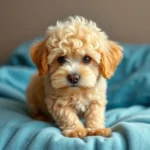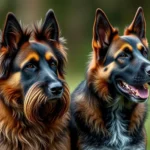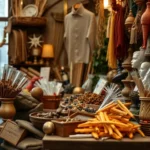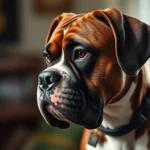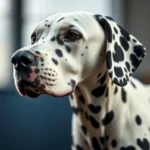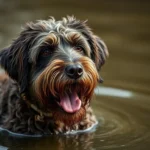
When considering a new canine companion, two breeds that often come to mind are the Great Dane and the Rottweiler. Both of these breeds are known for their size, loyalty, and striking appearances, yet they possess distinct characteristics that make them unique. Understanding the differences between the Great Dane and Rottweiler can help potential dog owners make an informed decision about which breed might be the best fit for their lifestyle.
Breed Overview
Great Dane
Originating in Germany, the Great Dane was initially bred to hunt wild boar, showcasing both strength and agility. Over the years, they have become known as gentle giants, loved for their friendly and affectionate nature.
- Size: A typical Great Dane can stand between 28 to 34 inches tall at the shoulder, with males generally larger than females, weighing anywhere from 110 to 175 pounds.
- Coat Type and Color: They have a short, smooth coat that comes in various colors, including fawn, brindle, blue, black, and harlequin.
- Lifespan: The average lifespan of a Great Dane is around 7 to 10 years.
Temperament: The Great Dane is known for being friendly, affectionate, and good with children, making them suitable family pets. They tend to be social and enjoy the company of other pets and humans alike.
Rottweiler
The Rottweiler has a rich history that dates back to the Roman Empire, where they were used as herding dogs and protectors. Today, they are revered for their intelligence and strength.
- Size: Rottweilers typically stand between 22 to 27 inches tall, with a weight range of 80 to 135 pounds. Males are usually larger than females.
- Coat Type and Color: They sport a short, dense coat that is predominantly black with rust markings.
- Lifespan: The average lifespan of a Rottweiler is about 8 to 10 years.
Temperament: Rottweilers are known for their confidence and loyalty. They tend to be protective of their families and can be wary of strangers, which makes them excellent guard dogs. With proper training and socialization, they can be affectionate and good with children.
Physical Characteristics
Size Comparison
When comparing the Great Dane vs Rottweiler, size is one of the most noticeable differences. The Great Dane is generally taller and heavier than the Rottweiler. While both breeds are large, the Great Dane can reach heights of over 30 inches, whereas the Rottweiler typically peaks at around 27 inches.
- Great Dane: 28-34 inches tall, 110-175 pounds
- Rottweiler: 22-27 inches tall, 80-135 pounds
Growth Patterns: A Great Dane matures quickly and reaches its full height by about 18 months, while Rottweilers may take up to 2 years to fully mature.
Coat and Grooming
Both breeds have short coats, but there are differences in their grooming requirements.
- Great Dane: Their smooth coat requires minimal grooming, although they do shed moderately. A weekly brushing will help keep their coat healthy.
- Rottweiler: They also have a short coat that sheds moderately. Rottweilers benefit from regular brushing to manage shedding, especially during seasonal changes.
Grooming Frequency: Both breeds can be groomed weekly, but Rottweilers may require more frequent brushing during shedding seasons.
Temperament and Behavior
Great Dane Temperament
The Great Dane is often described as friendly and social. They thrive on companionship and are known for their gentle nature. Their energy levels can vary, but they generally enjoy moderate playtimes.
- Social Behavior: Great Danes are typically good with children and other pets, making them excellent family dogs.
- Energy Levels: While they need daily exercise, they are not as hyperactive as some breeds. A couple of short walks and play sessions each day suffice.
- Common Behavioral Issues: Without proper training, they may develop separation anxiety or become overly protective.
Rottweiler Temperament
Rottweilers are known for their loyalty and protective instincts. They can be more reserved than Great Danes, especially around strangers.
- Social Behavior: With proper socialization, Rottweilers can be friendly towards children and other pets, but they may exhibit protective behavior.
- Energy Levels: They require regular exercise and enjoy activities that challenge them mentally and physically.
- Common Behavioral Issues: If not properly trained, Rottweilers may display aggressive tendencies or become territorial.
Health Considerations
Common Health Issues
Both breeds are prone to specific health concerns that potential owners should be aware of.
- Great Dane: Common issues include hip dysplasia, bloat, and heart conditions. Their size makes them particularly susceptible to bloat, a life-threatening condition.
- Rottweiler: They may face health issues such as hip and elbow dysplasia, heart problems, and certain types of cancer.
Lifespan and Care
- Great Dane: With an average lifespan of 7 to 10 years, they require regular vet check-ups to monitor for bloat and heart conditions.
- Rottweiler: Their lifespan is around 8 to 10 years, and regular health screenings can help catch any issues early.
Preventive Health Measures: Both breeds benefit from a healthy diet, regular exercise, and routine veterinary care to maintain optimal health.
Training and Socialization
Training Needs
Training is essential for both breeds, but their approaches may differ.
- Great Dane: They respond well to positive reinforcement and gentle, consistent training methods. Early obedience training is crucial due to their size.
- Rottweiler: Rottweilers are intelligent and eager to please, but they require a firm and confident handler. Early training and socialization are essential to curb any aggressive tendencies.
Socialization Tips
Socialization is vital for both breeds to ensure they develop well-rounded personalities.
- Great Dane: Expose them to various environments, people, and other animals from a young age to help them become more adaptable.
- Rottweiler: Early socialization classes are beneficial, as they can help Rottweilers learn to interact positively with other dogs and people.
Exercise and Activity Requirements
Exercise Needs for Great Danes
Great Danes require regular exercise to maintain their health, but they don’t need excessive amounts.
- Recommended Daily Exercise: Aim for at least 30 minutes to an hour of exercise daily, which can include walks, playtime, and mental stimulation.
- Ideal Activities: They enjoy leisurely walks, fetching games, and can even participate in dog sports suited to their size.
Exercise Needs for Rottweilers
Rottweilers are more active and require a robust exercise routine to keep them happy and healthy.
- Recommended Daily Exercise: They require at least 1 hour of exercise daily, which can include vigorous walks, running, and engaging in activities like agility training.
- Ideal Activities: Rottweilers thrive in activities that provide both physical and mental stimulation, such as obedience training and scent work.
Living Conditions
Ideal Home Environment for Great Danes
Great Danes thrive in spacious environments where they can move freely.
- Space Requirements: While they can adapt to smaller living spaces, a house with a yard is ideal.
- Best Living Situations: They do well in family homes where they can have access to outdoor space but can be comfortable in larger apartments as long as they receive adequate exercise.
Ideal Home Environment for Rottweilers
Rottweilers also need space but can adapt well to various living situations.
- Space Requirements: A home with a secure yard is preferred, as they enjoy outdoor play.
- Best Living Situations: They can live in apartments if they receive sufficient exercise and mental stimulation.
Cost of Ownership
Initial Costs
The initial costs of acquiring a dog can vary widely between the Great Dane and Rottweiler.
- Purchase Price Comparison: Great Danes tend to be more expensive, typically ranging from $1,000 to $3,000, while Rottweilers are generally priced between $1,000 and $2,500.
- Initial Setup Costs: Supplies such as bedding, food dishes, collars, and toys will also add to initial expenses. Both breeds will need larger-sized supplies due to their size.
Ongoing Costs
Long-term ownership costs include food, grooming, and healthcare.
- Food: Great Danes typically require more food due to their size, leading to higher monthly costs. Expect to spend $70 to $100 monthly. Rottweilers may cost around $50 to $80 monthly.
- Grooming: Grooming costs will be similar for both breeds, as they have low grooming needs. However, any health-related grooming needs may increase costs for Rottweilers due to their potential health issues.
- Healthcare Expenses: Regular vet visits, vaccinations, and emergency care can add up. Budgeting for health insurance can also be a smart choice to mitigate high expenses.
Conclusion
In the battle of Great Dane vs Rottweiler, both breeds offer unique qualities and characteristics. Great Danes are gentle giants, known for their friendly demeanor and suitability for families. On the other hand, Rottweilers are loyal protectors, requiring proper training and socialization to thrive in family environments.
Ultimately, the choice between a Great Dane and a Rottweiler should be based on individual lifestyle, living situation, and what each potential owner is looking for in a canine companion. Understanding these differences is key to ensuring a harmonious relationship with your new furry friend.

